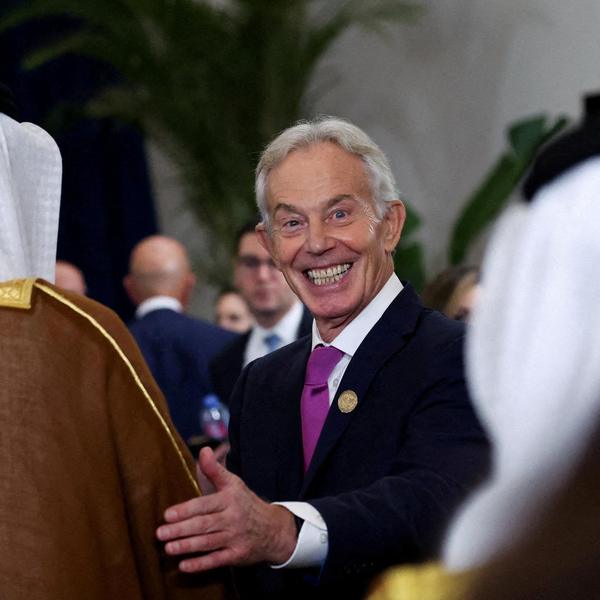The Science and Technology Agreement (STA) between the United States and China was the first official agreement signed after the normalization of U.S.-China relations in the 1970s. But now after 45 years, it is under threat.
Since it was signed in 1979, the STA has been a cornerstone of bilateral cooperation and the basis for scientific research cooperation between U.S. and Chinese government agencies and universities in areas of basic science like agriculture, clean energy, public health, and the environment.
But today the STA — which has twice received temporary six month extensions over the last year — is due to lapse yet again. It may again receive another temporary extension. But there is no mistaking the way the rise in geopolitical tensions between the U.S. and China has cast a shadow over possibilities for research cooperation between the world’s two leading scientific and technological powers.
Rather than emphasizing the ways cooperation in basic research can lead to mutual and global benefits, U.S.-China technology competition is increasingly viewed as zero sum, with any scientific or technological knowledge gained by China coming at the expense of U.S. national security. House Republicans have made the agreement a target, castigating it as an example of the U.S. “fueling its own destruction” and calling for its cancellation.
Beyond the halls of Congress, the U.S. government has increasingly scrutinized Chinese scientists and researchers in the U.S., fearing espionage or technology theft, which has led to tighter visa controls and added background checks. This climate of growing distrust not only has made renewal of the STA more contentious, it has also has made the re-kindling of overall science and technology cooperation more difficult, especially between Chinese American scientists and engineers and their counterparts back in China.
The U.S. has expressed growing concerns about China’s civil-military fusion strategy, which seeks to integrate civilian scientific research and technological advancements into military applications. The fear is that scientific cooperation could contribute to the advancement of China's military capabilities. Indeed, issues around science and technology have moved to the heart of U.S.-China relations, with export controls and other measures to restrict technology transfer increasing tensions between the two nations. In a recent examination of U.S.-China talks, science and technology were identified, along with Taiwan, as the major priority issues.
But it would be a mistake for agreements to facilitate basic scientific research cooperation such as the STA to become irretrievably damaged by the increase in U.S.-China tensions. The decision on whether to extend, amend, or terminate the STA has profound implications for the global scientific community. The STA provided an over-arching framework for facilitating scientific exchanges, joint research projects, and the sharing of knowledge and technical expertise.
Over the initial four decades of the agreement, this cooperation yielded significant benefits to both sides. The STA facilitated the formation of over 40 protocols for defining cooperative projects, and the establishment of numerous joint projects that advanced research in areas ranging from clean energy to agricultural pest control to public health to high energy physics — making it a vital mechanism for sustaining dialogue and partnership in science and technology.
For the U.S., the STA has provided access to China’s rapidly growing scientific capabilities and a vast pool of high-caliber talent. China, in turn, benefited from exposure to cutting-edge research, direct and in-direct technology transfer, and collaboration with top American institutions. The establishment of the National Natural Science Foundation of China was explicitly modeled after the U.S. National Science Foundation.
Moreover, U.S.-China bilateral cooperation contributed to global scientific progress, particularly in areas where international collaboration is essential. Science and technology cooperation also served as one of the bedrock elements in strengthening the overall bilateral U.S.-China relationship.
Eliminating the STA in the name of national security concerns risks all of these benefits. It also risks abandoning the crucial distinction between basic scientific research on areas of mutual benefit and a more limited range of technologies directly relevant to national security. Indeed, critics of the STA seem to see all scientific or technological exchange as a national security risk to the United States if it could possibly benefit China in any way.
But fully preserving the STA will require not just another temporary renewal, but a thoughtful updating of the agreement to address current concerns about data security, intellectual property theft, and dual use technologies of military relevance. There is no reason why such an update cannot occur.
Indeed, recent versions of the STA, such as the 2018 renegotiation under Trump, have already enhanced controls on intellectual property.
Many of the most pressing issues facing the world today, such as climate change, health pandemics, and food security, require an appreciable level of international cooperation. The U.S. and China, as the world’s two largest economies and leading scientific powers, have a clear responsibility to work together to address these challenges.
For instance, collaboration on climate science and clean energy technologies is crucial for reducing global carbon emissions. Joint research in public health can help prevent and respond to future pandemics more effectively. Renewing the STA with a focus on these global challenges could provide a platform for constructive engagement, even amidst broader geopolitical tensions.
In today’s world of accelerated innovation and interdisciplinary scientific discovery, science and technology advancement depends on cross-border collaboration and exchange of ideas. The U.S. and China have complementary scientific strengths. For example, the U.S. still leads in key areas of basic scientific research and innovation, while China excels in large-scale application and commercialization of technologies.
By working together, both countries can accelerate advancements in critical areas such as artificial intelligence, quantum computing, and biomedical research, including finding a cure for cancer or Alzheimer’s disease. The STA has the potential to facilitate this cooperation, driving scientific progress in selected fields that benefit both nations.
Renewal of the STA could serve as a mechanism for re-building trust and managing competition between the U.S. and China. In addition to bilateral cooperation, the U.S. and China can play a facilitative role in multilateral science and technology initiatives. Issues like climate change and global health are inherently transnational and require the participation of multiple countries. A renewed STA could include commitments to jointly participate in international scientific efforts, thereby both fortifying the productivity of the overall global science and technology ecosystem and preventing the bifurcation of the international science and tech system into American and Chinese spheres of interest.
The future of U.S.-China science and technology cooperation hangs in the balance as renewal of the STA remains uncertain, especially given the political dynamics of the U.S. presidential election. Do both governments have the political will to sign an agreement? Based on several discussions in Beijing last week with Chinese and American contacts who are familiar with negotiations, the two sides are still at the table discussing an updated agreement, which suggests that the door remains open.
But the political obstacles to renewal are significant given geopolitical tensions, security concerns, and the hostility to China in U.S. political rhetoric. However, the opportunities for collaboration in addressing global challenges, advancing scientific progress, and building trust are compelling. There is no prominent global scientific challenge whose meaningful solution will not require Sino-U.S. cooperation.
















